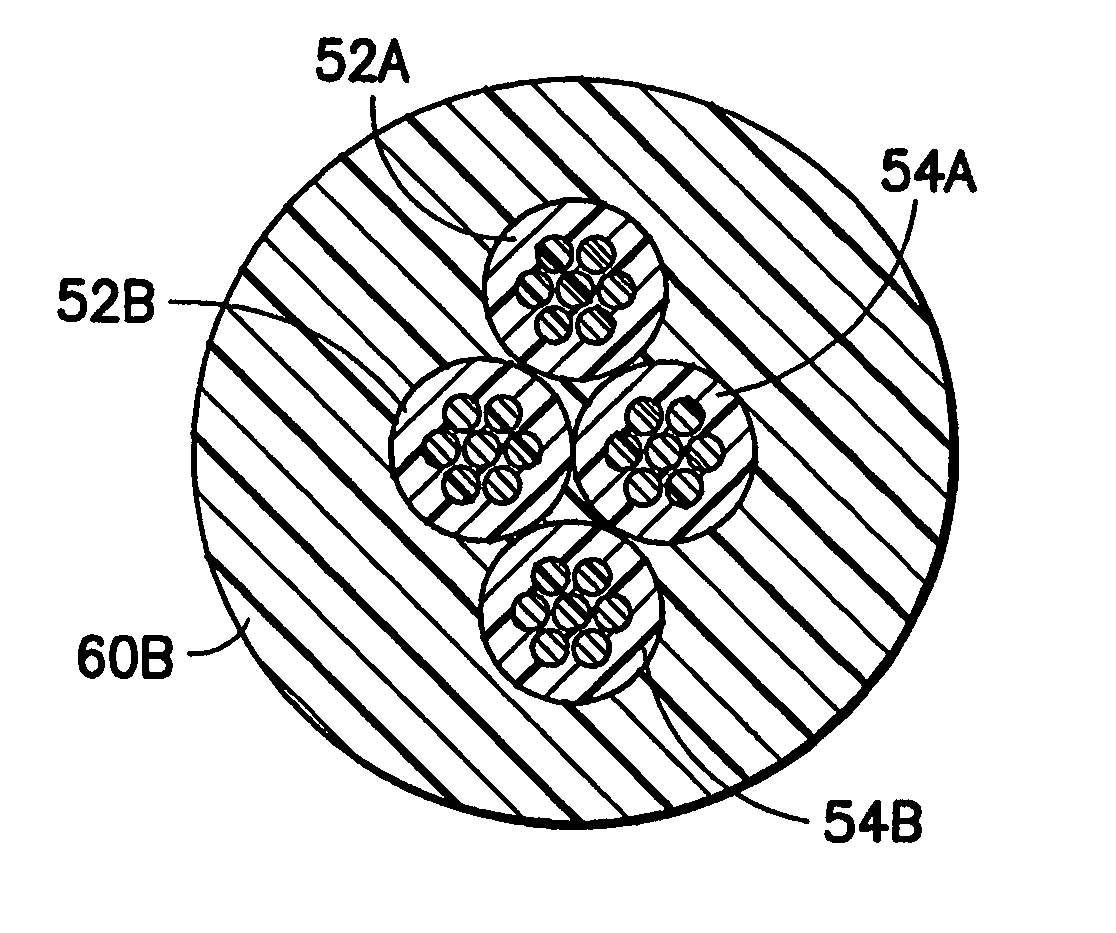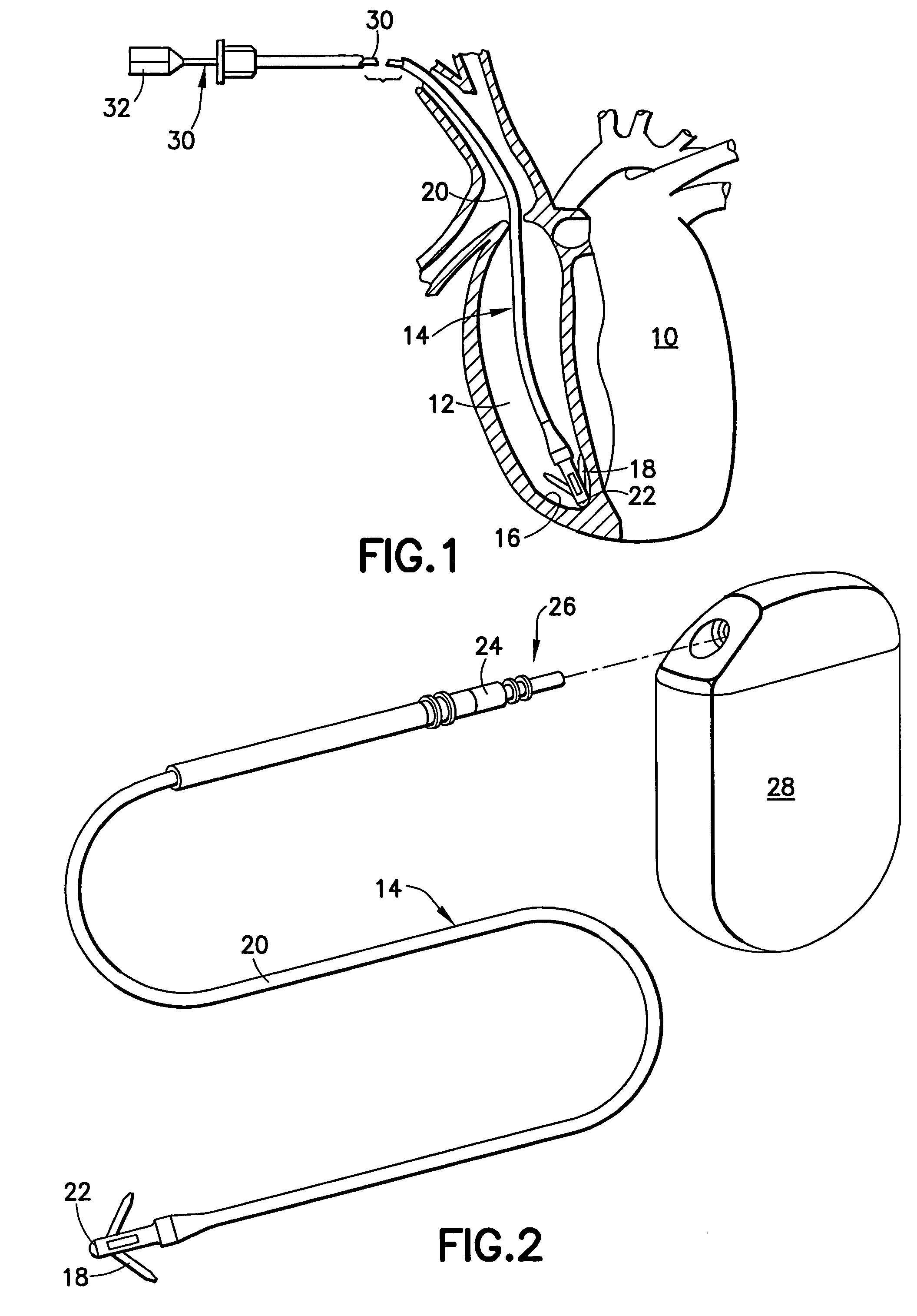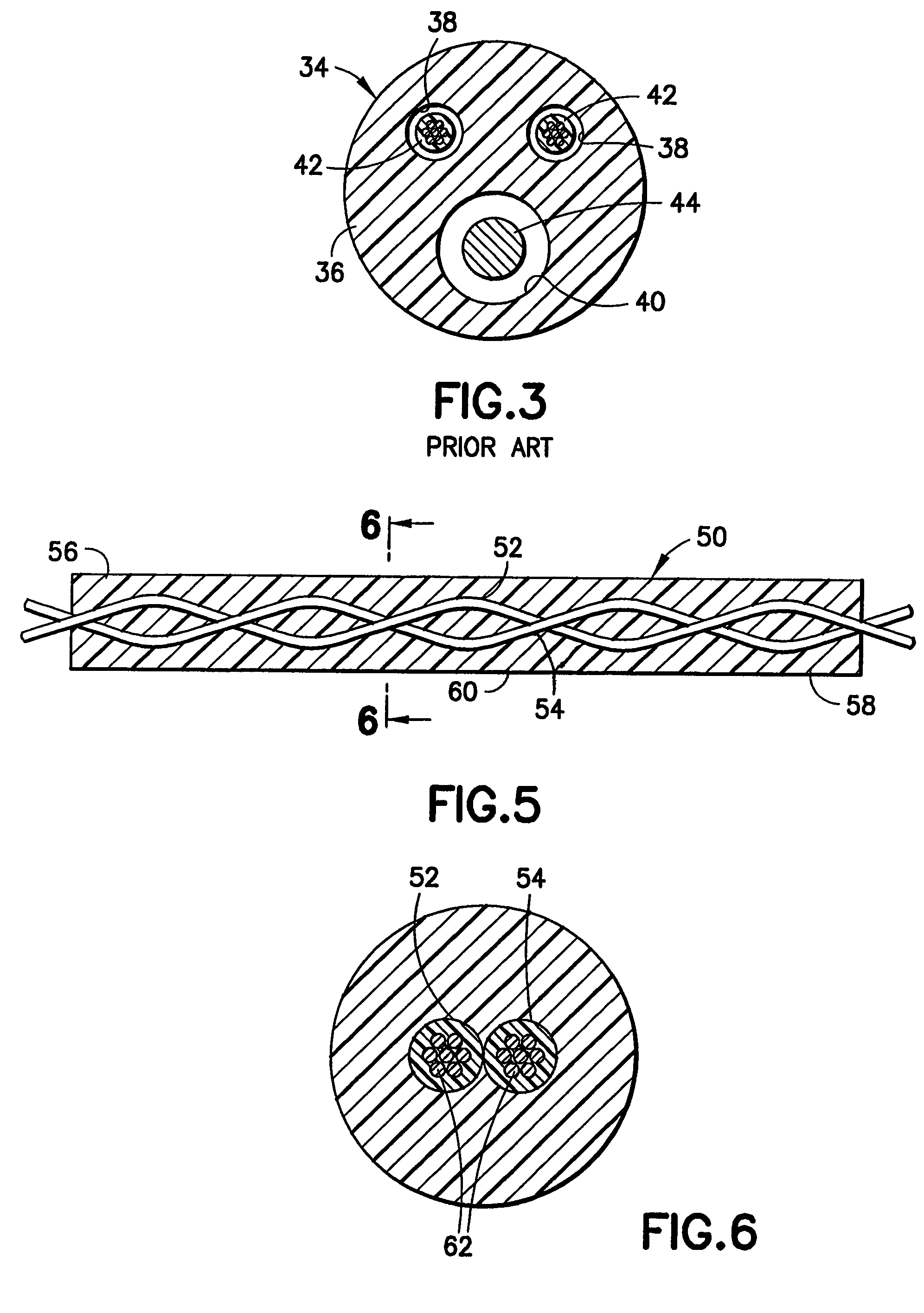Construction of a medical electrical lead
a technology of electrical leads and construction, which is applied in the field of lead assemblies, can solve the problems of adding complexity in the manufacture of pacing and defibrillation, and achieve the effects of reducing the overall size of the lead, reducing the cycle time, and reducing the process steps
- Summary
- Abstract
- Description
- Claims
- Application Information
AI Technical Summary
Benefits of technology
Problems solved by technology
Method used
Image
Examples
Embodiment Construction
[0037]Refer now to the drawings and, initially, to FIG. 1 which illustrates a diagrammatic perspective view, partially cut away and shown in section, of a heart 10 into the right ventricle 12 of which is inserted a body implantable lead 14 of the endocardial type incorporating features of the present invention. Although the present invention will be described with reference to the embodiments shown in the drawings, it should be understood that the present invention can be embodied in many alternate forms or embodiments. In addition, any suitable size, shape or type of elements or materials could be used. The lead 14 is attached to an interior wall 16 of the heart 10 by means of fixing tines 18, for example, which engage the tissue or trabeculae of the heart.
[0038]As further illustrated, the lead 14 also includes an insulating sheath 20 interconnecting a distal electrode 22 secured adjacent the interior wall 16 and an electrical connector 24 (see FIG. 2) at a proximal end 26 to which...
PUM
 Login to View More
Login to View More Abstract
Description
Claims
Application Information
 Login to View More
Login to View More - R&D
- Intellectual Property
- Life Sciences
- Materials
- Tech Scout
- Unparalleled Data Quality
- Higher Quality Content
- 60% Fewer Hallucinations
Browse by: Latest US Patents, China's latest patents, Technical Efficacy Thesaurus, Application Domain, Technology Topic, Popular Technical Reports.
© 2025 PatSnap. All rights reserved.Legal|Privacy policy|Modern Slavery Act Transparency Statement|Sitemap|About US| Contact US: help@patsnap.com



